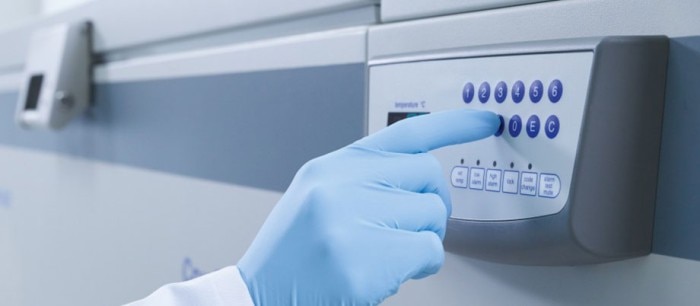МЕНЮ
RU | RUB
RU | RUB
Вы собираетесь покинуть этот веб-сайт.
Обратите внимание, что ваша текущая корзина еще не сохранена и не будет восстановлена ни на новом веб-сайте, ни при возврате на этот веб-сайт. Если вы хотите сохранить свою корзину, войдите в свою учетную запись.
myEppendorf
Поиск результатов не дал
Варианты поиска

What are the first steps after a freezer alarm?
Lab Academy
- Molecular Biology
- Cell Biology
- Freezers & Accessories
- Cell Culture
- Lab Life
- Lab Routine
- Efficiency
- Storage
- FAQ
Ask the expert - Answer by Dr. Jan Bebermeier, Global Marketing Manager Cold Storage at Eppendorf
This article appeared first in “ Inside Cell Culture ”, the monthly newsletter for cell culture
A freezer alarm requires the existence of a freezer alarm system. In principle, there are two ways to be informed about a freezer/ power failure. The classic way is a call by the security desk about some beeping or flashing freezer in the laboratory or a hallway. Normally, you do not get any further information about the situation. The second way of information about an alarm is a personal message on your smartphone about a freezer alarm. This type of alarm is based on a cloud-based monitoring and notification system. Starting from the alarm, keep calm: You have several hours after the first alarm until the temperature inside the freezer is at a critical level. Based on data from an external test house, Eppendorf CryoCube freezers like the F440h or F570h with a 2/3 filling require ca. 10 hours to (passively) warm-up their chamber temperature after power failure from -80°C to -50°C. If the alarm is notified via a convenient up-to-date digital system, you can log-in from home or wherever you are when the alarm happened. The real situation can be pre-checked like temperature within the freezer, time of failure, indications about the causes,… When you finally decide to go to the laboratory, there are different aspects to consider:
This article appeared first in “ Inside Cell Culture ”, the monthly newsletter for cell culture
A freezer alarm requires the existence of a freezer alarm system. In principle, there are two ways to be informed about a freezer/ power failure. The classic way is a call by the security desk about some beeping or flashing freezer in the laboratory or a hallway. Normally, you do not get any further information about the situation. The second way of information about an alarm is a personal message on your smartphone about a freezer alarm. This type of alarm is based on a cloud-based monitoring and notification system. Starting from the alarm, keep calm: You have several hours after the first alarm until the temperature inside the freezer is at a critical level. Based on data from an external test house, Eppendorf CryoCube freezers like the F440h or F570h with a 2/3 filling require ca. 10 hours to (passively) warm-up their chamber temperature after power failure from -80°C to -50°C. If the alarm is notified via a convenient up-to-date digital system, you can log-in from home or wherever you are when the alarm happened. The real situation can be pre-checked like temperature within the freezer, time of failure, indications about the causes,… When you finally decide to go to the laboratory, there are different aspects to consider:
- Keep the freezer door closed until you really start the sample evacuation - everyone checking the samples does not help, it only speeds up the warming inside the freezer.
- Check the power supply (power cable at instrument side as well as at socket side), try to re-boot the freezer, change also the socket/ power line and try to restart the instrument. If this also fails, continue:
- Use your “Sample evacuation plan”: Where are free locations in other freezers in the building for complete racks or boxes with high value samples? If you are lucky, there is a back-up freezer in the building
- Organize ice when transportation of super-critical samples takes longer than a few minutes
- After taking care of the samples, call the service hotline of the freezer supplier
Read less
